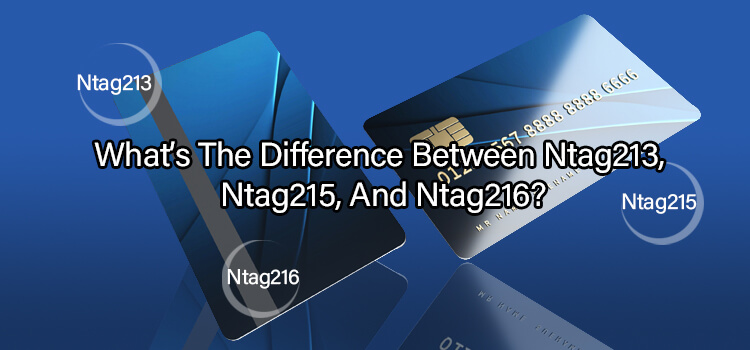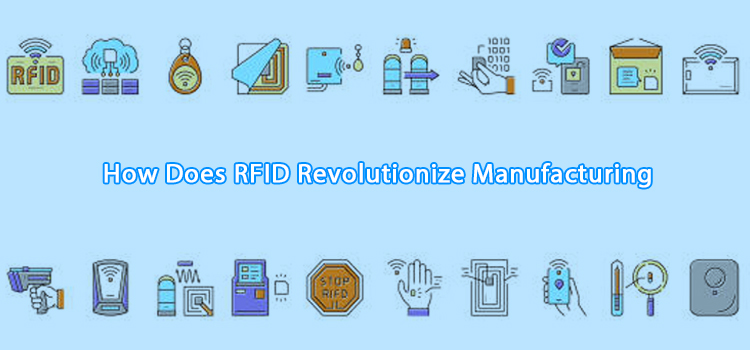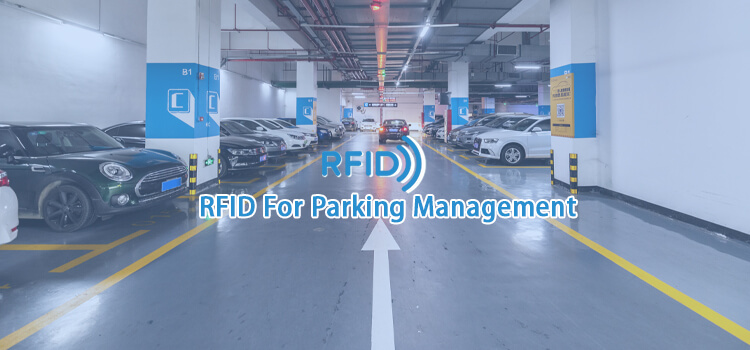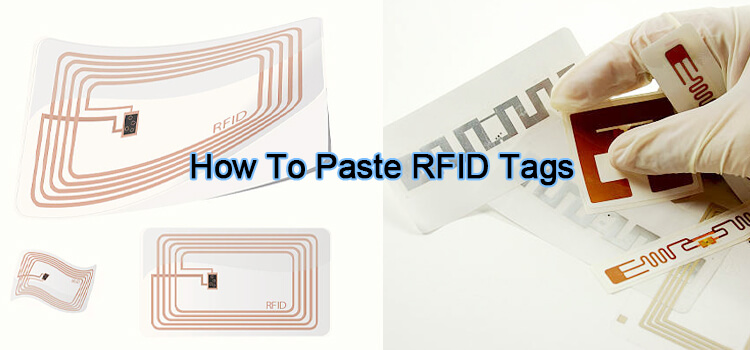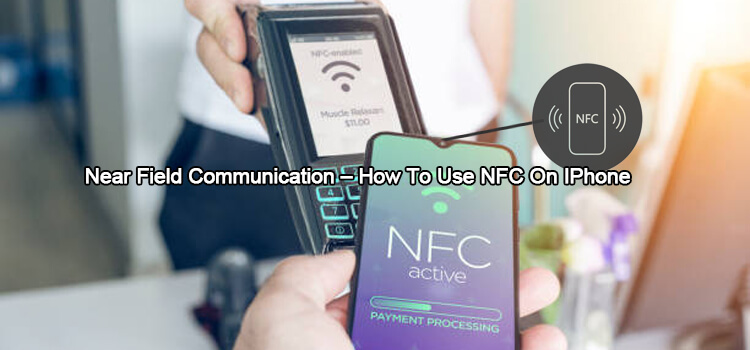NTAG is a family of NFC tags developed by NXP. They are used in contactless technology, allowing high-volume transactions without compromising security.
The tags comply with NFC Forum Tag Type 2 and Type 4 specifications. They are certified by ISO 14443A, ensuring global interoperability.
In this article, we look at the 3 main types of NTAGs. What’s the difference between NTAG213, NTAG215, and NTAG216? Let’s find out.
What is NFC Technology?
Before we get into the differences between NTAG213, NTAG215, and NTAG216, let’s first look at NFC technology.
NFC (Near Field Communication) is a short-range wireless technology that enables two electronic devices to communicate by bringing them within 4 cm of each other.
One of the key benefits of NFC is that it doesn’t require any power-intensive key exchanges or pairing procedures. All you need is to bring the devices close to each other to establish a connection.
NFC technology is used in several applications, including contactless payments, transit passes, and access control.
NTAG213, NTAG215, and NTAG216: What’s the Difference?
Now that we have a basic understanding of NFC technology, let’s look at the differences between NTAG213, NTAG215, and NTAG216.Overall, the difference in these cards lies primarily in their memory.
Otherwise, they have numerous similarities, including features such as 32-bit passwords and Counter ASCII mirrors.
- Ntag213
Ntag213 is an advanced tag that replaced Ntag2013. It has a higher memory capacity (144 bytes) and can store more data than Ntag213. It also features an anti-collision algorithm, which allows multiple tags to be read simultaneously.
Additionally, this tag has a better read range and speed. These features make it ideal for use in contactless smart cards, such as payment cards and transit passes.
- Ntag215
NTAG215 is a mid-range tag with a memory capacity of 504 bytes. It is designed for use in a variety of applications, including contactless smart cards, posters, and product labeling.
It can also be encoded with different types of V-cards. This makes it the best option for businesses that want to share contact information with customers. It is cheaper than Ntag216.
- Ntag216
NTAG216 is one of the most advanced tags in the NTAG family. It has a memory capacity of 888 bytes and can store more data than any other NTAG tag.
It also features an anti-collision algorithm, allowing multiple tags to be read simultaneously. This makes it ideal for use in contactless smart cards, such as payment cards and transit passes.
It is the most expensive tag of the three and has the longest read range. It is also fast and has a high data transmission rate.
Comparison between Ntag213, Ntag215, and Ntag216
These NFC tags have several similarities, including:
- Release Date. These tags were all released in 2013. This means that they are all compliant with the latest NFC Forum specifications.
- Type 2 and 4 Compliance. These tags are both NFC Forum Type 2 and Type 4 compliant. This means that they meet the global interoperability standards set by the NFC Forum.
- 32-bit Password. These tags feature a 32-bit password, which helps to ensure data security.
- Counter ASCII Mirroring. These tags all have Counter ASCII mirroring, which allows for the detection of counterfeit tags.
- Operating Frequency. All these tags operate at a frequency of 13.56 MHz. As such, they are all compatible with NFC-enabled devices. They can also be used for contactless payment and data sharing.
- Chip Thickness. All these tags have a thickness of 75 µm / 120 µm, making them ideal for use in a variety of applications. Their thin nature allows them to be embedded into a variety of substrates.
- Data Transmission Rate. These Ntags have a data transmission rate of 106 Kbit/s. This makes them ideal for transmitting data between devices.
- Input Capacitance. These tags have an input capacitance of 50 pF. This allows them to be used in conjunction with a variety of devices.
- ISO Certification. These tags are ISO/IEC 14443A certified, making them ideal for use in contactless smart cards.
Here are several tables comparing the key features of Ntag213, Ntag215, and Ntag216:
Ntag Features
| Ntag Type | Memory (Bytes) | Max URL (Chars) | Cost |
| Ntag213 | 144 | 136 | Cheapest |
| Ntag215 | 504 | 488 | Medium |
| Ntag216 | 888 | 872 | Most expensive |
Ntag Specifications
| Chip | Chip Series | NFC Forum | Availability | Scan Strength |
| Ntag213 | Type 2 | Ntag | High | High |
| Ntag215 | Type 2 | Ntag | Medium | High |
| Ntag216 | Type 2 | Ntag | Low | High |
Ntags User Specifications
| Chip | UID | 32-bit password | UID ASCII mirror | Scan Counter | Counter ASCII mirror | Lockable |
| Ntag213 | 7 Bytes | Yes | Yes | Yes | Yes | Yes |
| Ntag215 | 7 Bytes | Yes | Yes | Yes | Yes | Yes |
| Ntag216 | 7 Bytes | Yes | Yes | Yes | Yes | Yes |
NTAGs Technical Specifications
| Chip | Thickness | Data Trans. Rate | Fast Read | Anti-collision |
| Ntag213 | 75 µm / 120 µm | 106 Kbit/s | ✔ | ✔ |
| Ntag215 | 75 µm / 120 µm | 106 Kbit/s | ✔ | ✔ |
| Ntag216 | 75 µm / 120 µm | 106 Kbit/s | ✔ | ✔ |
Applications of Ntag213
- Marketing & Advertising. These chips can be affixed to products, posters, or any other surface where you want to collect contact information from passersby.
- Vouchers. You can use these chips as vouchers to redeem for products or services.
- Loyalty Cards. These tags can be used in place of traditional loyalty cards.
- Identification of Objects. You can use these tags to identify or track objects.
Applications of Ntag215
There are many more applications for Ntag215 than there are for either Ntag213 or Ntag216. Here are some specific applications:
- Product Labeling. Ntag215 can be used to label products with unique identification codes. These codes are scanned by an NFC reader and the product is identified.
- Poster Advertising. Posters embedded with an NTAG215 chip can be scanned to collect contact information.
- GS1 EPC/RFID. This is a global standard for product identification. Ntag215 can be used to generate EPC codes that comply with the GS1 standard.
Applications of Ntag216
As the most advanced tag in the NTAG family, Ntag216 has a variety of applications:
- Contactless Smart Cards. These cards utilize NFC technology to make transactions without the need for a PIN or signature.
- · Passports. You can use Ntag216 to store data in passports, such as biometric information.
- NFC Forum Type 2 Tag. This tag specification is developed and maintained by the NFC Forum. Ntag216 is compliant with this specification.
- V-Cards. These are contact cards that can be encoded with information about the cardholder. They can be used for a variety of purposes, such as identification, access control, and payments.
Which Tag Is Right for You?
If you’re looking for a tag that is versatile and can be used in a variety of applications, then Ntag215 is the best option. It is cheaper than Ntag216 and has a memory capacity of 504 bytes.
If you need a tag with a longer read range or want to use it in contactless smart cards, then Ntag216 is the best option. It is the most expensive tag of the three and has the longest read range. It is also fast and has a high data transmission rate.
If you need a tag for product labeling or identification, Ntag213 is the best option. It is the cheapest tag of the three and has a memory capacity of 128 bytes.

